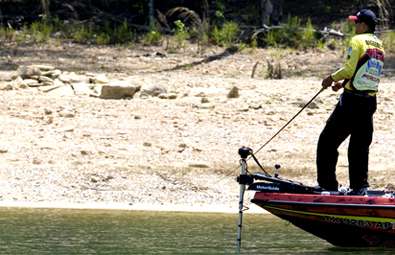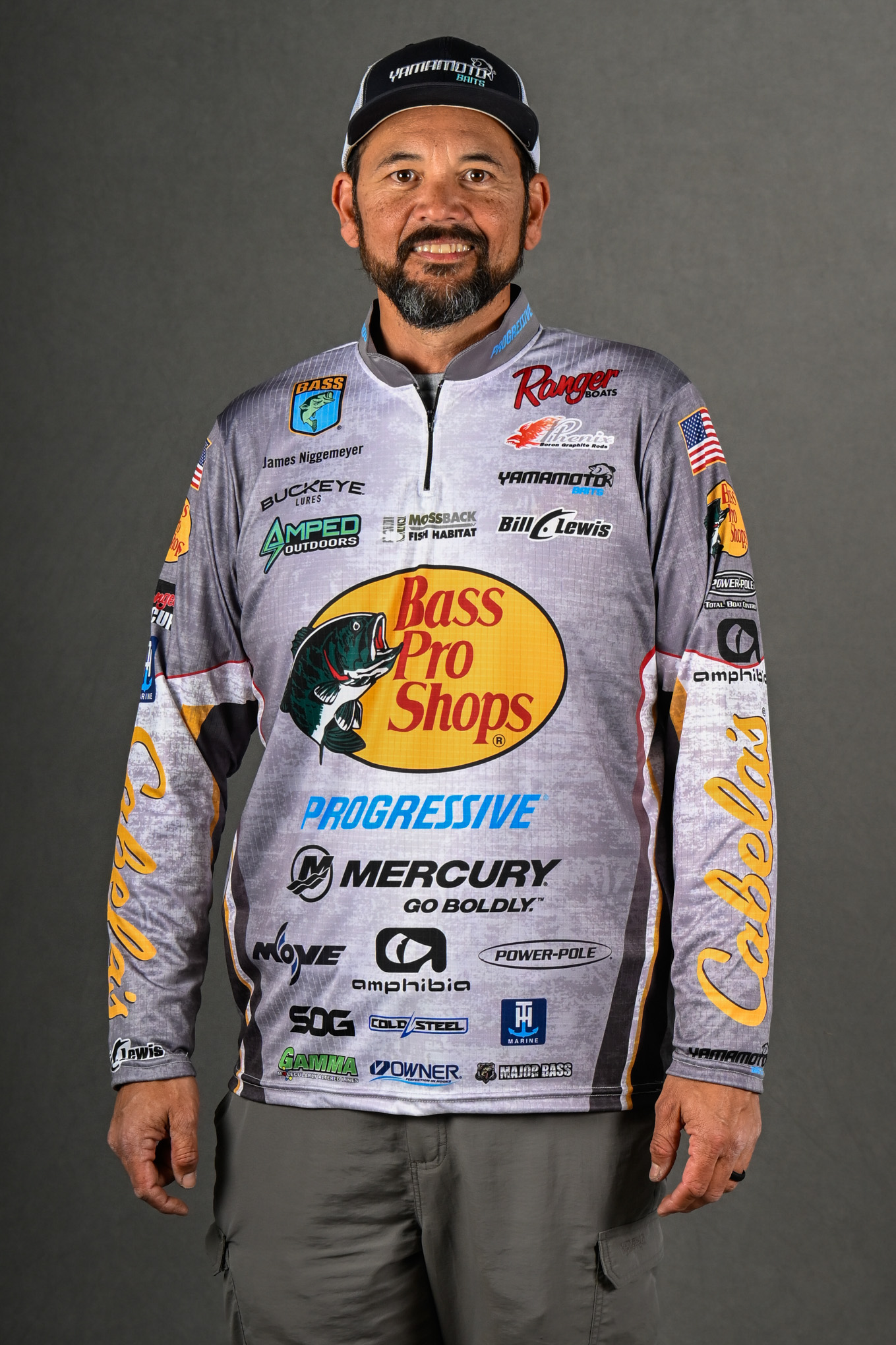
Editor's Note: In this two-part series, we'll take a look at the basics of buzzbaiting. On the surface it looks easy enough. Toss one out, churn water as you wind it back and big bass will be yours. The reality, however, is somewhat different. Fishing these baits at the right times, in the right places and with the right tackle is an absolute necessity.
Elite Series anglers James Niggemeyer and Bill Lowen are two of the better buzzbait anglers on the tour. Here's what they have to say on the subject.
Part 1: James Niggemeyer
The spring and fall are the best times of the year to fish a buzzbait. The prespawn is behind us, but the spawn and the postspawn are still viable options in large sections of our country. And fall isn't as far away as you might think.
I like stained water for my buzzbaits; in fact, it's an absolute requirement in my book. Extremely clear or muddy water doesn't work for me. The reasons for that are complex but boil down to this: Stained water will push bass shallow and activate the bite. Clear water, on the other hand, makes them skittish, while muddy water ruins the topwater bite.
I'll toss a buzzbait anytime the water is in the upper 50-degree range or higher. I know some guys think the high 50s is too cold, but many of my best catches have come from water in that range. Bass are more active in low temperatures than many anglers think.
I like my buzzbait water to be shallow, as well. Anything from a few feet to less than one is good with me. When bass are that shallow, they're usually active. When they're deeper than that, there are more effective tools with which to catch them.
My favorite spot to buzzbait fish is on, or near, a shallow spawning flat. The bass will travel, hunt and feed in those areas before, during and after they reproduce. Areas with rocks, stumps, laydowns and grass are prime.
Obviously, prespawn is the time to start using a buzzbait. But don't forget about the postspawn as it runs into summer. Bass don't move to their summer haunts in one trip. They make many stops along the way. Most of those stops are near a spawning flat.
And not all waters warm and cool at the same rate. If we have a chilly spring with lots of cold rain, that'll hold the bass shallow for a long time after they spawn, their trip to their summer homes will be longer with more stops along the way.
In the fall I prefer areas where bass are pushing baitfish. That's frequently in the back of creeks, shallow water bays and, of course, on feeding flats.
Buzzbaits are often at their best early in the morning, late in the afternoon or when the sky is cloudy and overcast. But don't be afraid to throw one when the sun's out. If the fish are shallow, and the water's right, they'll bite them. A buzzbait is a reaction bait. It isn't meant to do anything but make the bass attack out of fear, surprise or instinct.
One way to trigger more of those types of attacks is to crimp the rivet that fastens the blade(s) to the wire shaft on the lure. That'll make the bait squeal as it's retrieved. At the same time, the friction will create wear between the blade and the shaft. That'll cause the bait to wobble, clang and bang.
I throw my buzzbaits with a 7-foot St. Croix Legend Tournament Bass rod (heavy action), an Ardent XS1000 reel (6.3:1 gear ratio) and either 20-pound-test fluorocarbon or 50-pound-test Sunline braid.
My bait choice is Strike King. I prefer the Elite model or the Buzz King Tri-wing. When I want to downsize, I go with Mini Pro-Buzz. My color choice is usually chartreuse and white for most of the year. In the fall, however, I sometimes throw white or black.
One final thought: I never, ever, throw a buzzbait without a trailer hook. There are too many short strikes on them to take a chance.





